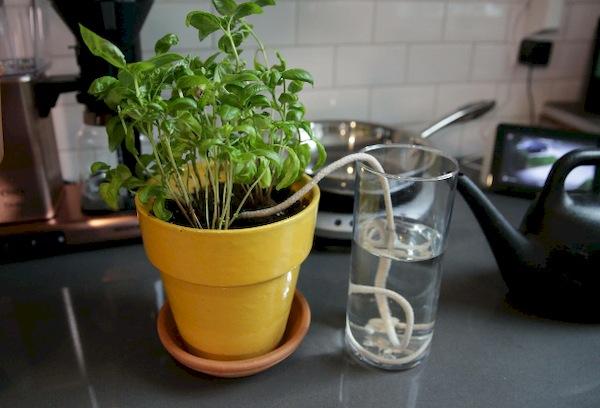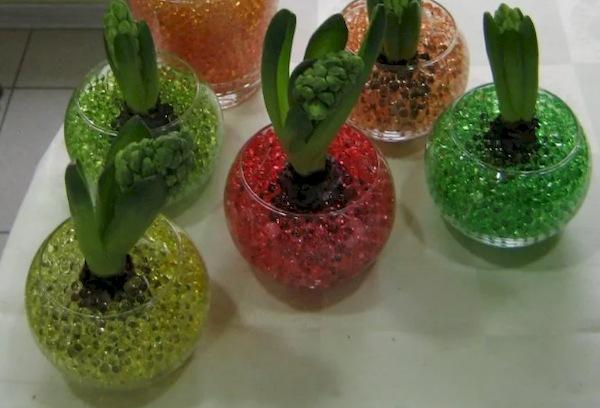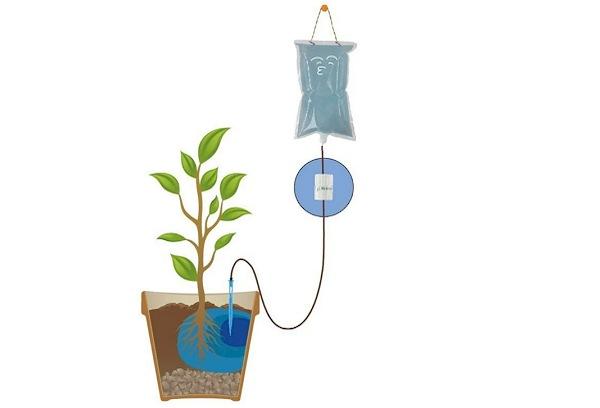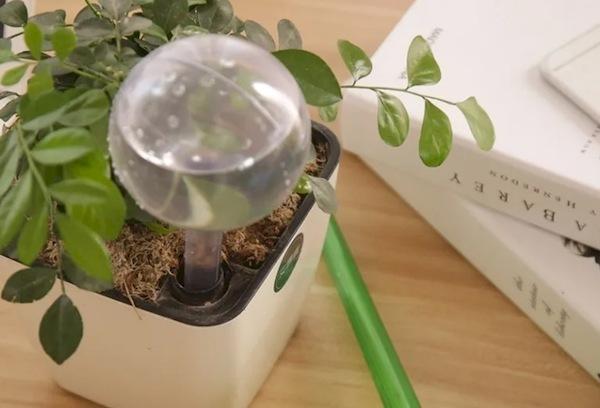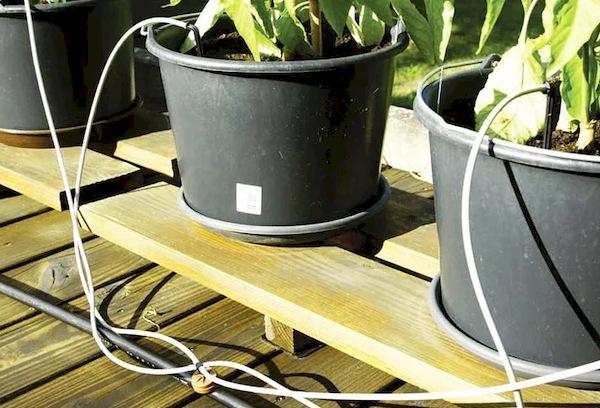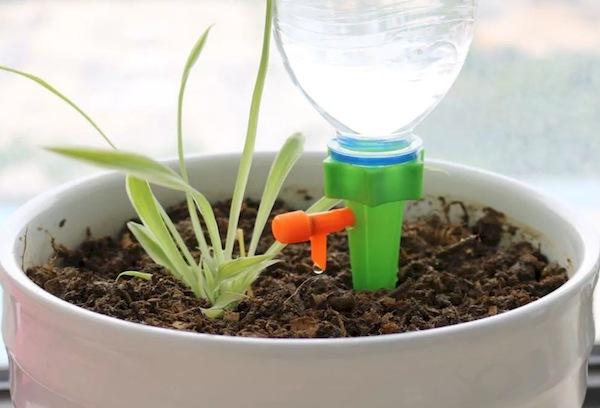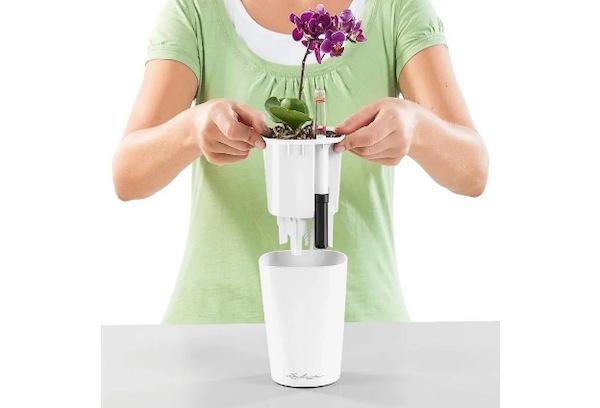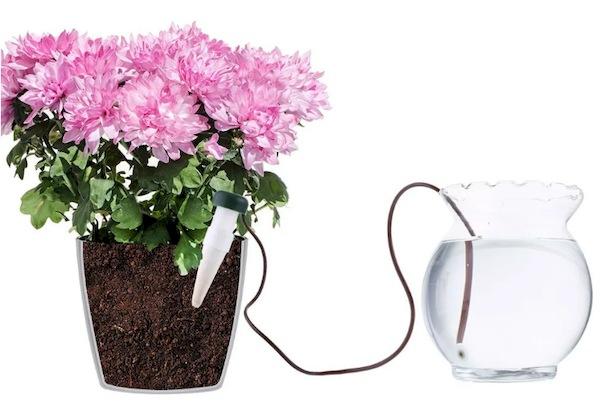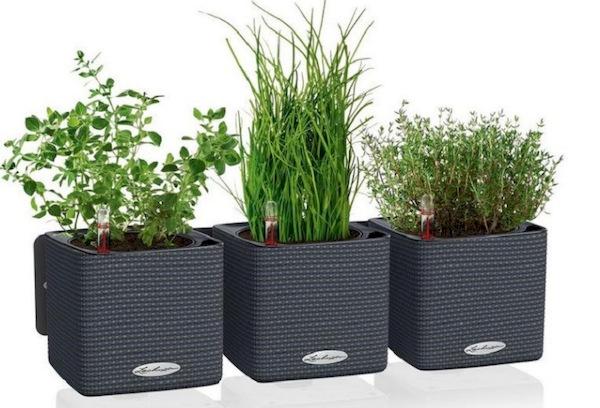Do-it-yourself automatic watering for indoor plants: checked after flying to the sea for 2 weeks
Content:
For many who like to grow flowers in pots on their windowsills, the holiday season causes a real headache, as they need to find someone to take care of the vegetation during their vacation. Today this problem is solved by installing a special system that will automatically moisten the soil, thereby protecting the soil from drying out and the flower from dying. Most people try to organize automatic watering for indoor plants with their own hands.
What is an automatic watering system and how does it work?
Automatic watering is a system that allows you to moisten the soil in a flowerpot automatically without direct human participation and constant control.
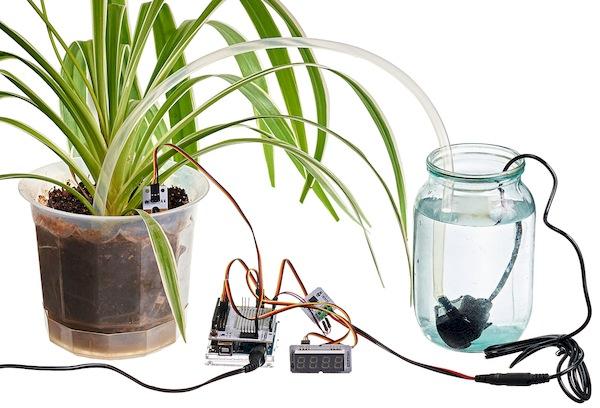
This method is considered effective; it actually promotes continuous irrigation of the soil and prevents drying out, but only for a short period of time. After which it is necessary to replenish the irrigation fluid, and in some cases the system needs to be cleaned.
If you have a long business trip ahead, it is best to connect the automatic watering system directly to the sewer system to ensure constant access to water for the flower.
The advantage of automatic watering is that it supplies the required amount of water to the soil, and therefore prevents waterlogging or drying out. All this is achieved due to the fact that the parameters that a particular flower needs are initially set.
The system has its own positive qualities, among them are:
- the possibility of rational water consumption is provided, since the system independently determines the volume of liquid and the need for its supply to the plant;
- convenience - caring for indoor vegetation is reduced to a minimum, since there is no need to monitor the depth of drying of the soil for each flower; automatic watering will take care of this;
- the structure of the soil in the pot noticeably improves, this is achieved due to optimal moisture in the soil, it takes as much as it needs, but a person, as a rule, pours it by eye;
- Easy to install, everyone can organize the system, easy maintenance during operation.
Another indisputable advantage of the automatic watering system is that the structure can be assembled with your own hands. To do this, you don’t even have to purchase material, since most irrigation devices use improvised means.
7 types of automatic watering for indoor plants
To create automated watering of indoor plants, there is no need to purchase expensive equipment. It is quite possible to organize the systems yourself if you know their operating principles. It is worth familiarizing yourself with the main methods.
Using a wick
To organize another automated watering, you can use a regular rope woven from synthetic fibers. The material has the ability to quickly absorb and transfer liquid, and do so along its entire length.
The manufacturing scheme for the wick system is as follows:
- an ordinary rope will act as a wick;
- one of its ends must be placed in a container filled with water;
- bring the second tip to a flowerpot with a houseplant;
- the wick thus absorbs liquid from the container and transports it to the flowering crop.
The wick can be buried directly in the ground or a rope can be stretched and secured in the drainage hole. By the way, if the size of the container allows, then you can make several wicks and moisten all the plants, but then they need to be marked close to a source of moisture.
The main advantage of this method of automatic watering is the ability to regulate the volume of water supplied to the pot. When raising the flowerpot to a height, the liquid will flow more slowly, but if the container, on the contrary, is higher than the flowerpot, then the watering speed will decrease.
Hydrogel
For lovers of modern designs and high-tech techniques, you should pay attention to hydrogel or clay granules. This automatic watering option is also suitable for those who do not want to clutter their room with protruding bottles, strange containers and other objects that spoil the interior.
Using hydrogel, it can be replaced with granulated clay, and effective automatic watering can be organized. Absorbent balls can be purchased at your local garden supply store. The material used to produce granules has the ability to instantly absorb water and then gradually release it to the soil as it dries.
When organizing a self-watering system, it is important to take into account that hydrogel and clay swell greatly after absorbing liquid and accordingly increase in size.
You can make automatic watering according to the instructions:
- first you need to choose a suitable size pot for your indoor plant, it should be wide and roomy;
- the bottom of the container is completely covered with hydrogel balls, and a nutrient substrate is placed on this layer, into which the flower is planted;
- It is also advisable to fill all free space with moisture-absorbing material.
The principle of operation of such a system is to periodically add liquid, and the granules will independently provide the soil with the necessary volume of water. Thus, the soil will always be moist, which means that the vegetation will not dry out during the absence of the owners.
An important condition is to cover the soil with plastic film so that the moisture does not evaporate quickly. The absorbent material in the form of clay and hydrogel is reusable, so there is no need to replace it after each watering-drying cycle. Automatic watering will last for many years.
If you need to organize the system quickly, but the time has not yet come to transplant the plant, then another method will do. The balls are immersed in water for several hours, and then laid out on the surface of the soil. To be safe, the soaked granules are covered with a damp layer of moss.
Medical drip
Another effective and inexpensive way to easily organize automatic watering of indoor plants.
The system will require a medical dropper:
- to assemble the structure, you need to stock up on a tube from the system, on one of the ends of which a load is fixed - this is done so that it does not float up;
- the second tip is located exactly at the roots above the surface of the substrate;
- Irrigation water is poured into a container of suitable size, and the reservoir itself is installed on an elevation; it should be located above the flowerpot that needs to be moistened;
- The tip of the tube with a weight is placed in the water; it should sink to the bottom of the container.
Now all that remains is to open the automatic watering system so that the water begins to moisten the soil. The advantage of this method is the ability to adjust the speed at which liquid will flow to the root system.
It is necessary to take into account the needs of indoor plants, since some representatives need daily moisture, while for others it is enough to provide watering activities every 15-20 days, and they will feel quite comfortable in such conditions. The automatic watering system is selected individually for each type.
Using flasks
Another effective method that allows you to arrange automatic watering of indoor vegetation yourself involves the use of plastic cones with a long spout on the neck. Similar products are available in different sizes, shapes and colors.
With their help, you can not only provide the plant with regular moisture, but also create an original design in the room; bright cones will look great against the backdrop of a blooming crop.
The operating principle of such an automatic watering complex is simple:
- the cones are filled with liquid, which will eventually irrigate the flowers;
- the spout is slightly recessed into the substrate;
- wet soil blocks the flow of liquid, but when the substrate dries, oxygen begins to act, which gradually penetrates inside the flask and displaces water, it begins to moisten the soil along with the root system.
This method has a slight drawback; spherical flasks do not have the ability to dose the liquid entering the nutrient soil in the pot. This often leads to flooding of the plant, which has a bad effect on the crop, its growth, and flowering. This is why this option must be used on moisture-loving vegetation that requires frequent watering.
Capillary mats
One of the most popular ideas for organizing automatic watering of indoor flowers is the use of a capillary mat. This is a modern technological product that helps moisten the soil of flowerpots without direct human intervention.
The capillary mat is a kind of mat, the production of which involves a material with high hygroscopic characteristics. The mats have excellent absorbent properties and are also able to gradually release it later.
The system is organized as follows:
- first you need to stock up on two pallets of different sizes;
- in the one with more liquid intended for irrigation, a smaller tray is placed in it, but its bottom must be perforated (have small holes);
- a capillary mat is already laid out on it, and a pot with a plant that needs watering is placed on it.
There is another option for arranging the system; in terms of its operating principle, it is similar to automatic watering based on a wick. To do this, the mat is laid out on a flat surface, it can be a windowsill, bedside table or table. Potted plants are already installed on the mat. An important condition is a good drainage layer in the flowerpots, otherwise waterlogging cannot be avoided.
All that remains is to lower the tip of the mat into a reservoir of liquid; the material will gradually absorb moisture and transport it to the root system of the vegetation.
Both options are effective and reliable, the main thing is to monitor the water level in the container, then the flowers will always be watered on time and the soil will not unexpectedly dry out.
Drip method
This option is considered one of the simplest; a regular plastic bottle is used to make an automatic watering system.
You must proceed as follows:
- the bottle is washed thoroughly, it must be equipped with a stopper;
- using a sharp knife, remove the bottom, the result should be a funnel into which liquid intended for future watering can be conveniently poured;
- using an awl or knitting needle heated over a fire, a hole is made in the cork, its diameter should vary from 3 to 4 mm;
- a mesh is fixed to the neck of the eggplant; it can be replaced with gauze - it serves as a kind of filter that prevents clogging; it must be securely secured with tape or other suitable material;
- the plug is screwed in.
Installation of automatic watering is carried out in two versions. The first involves placing the bottle neck down directly into the ground. The second method is hanging above the ground.
Pots with automatic watering
Pots with automatic watering are considered very convenient. They will help with the following:
- maintain an optimal indoor microclimate;
- will help in growing the most fastidious crops;
- will take care of the flowers even in the event of a long absence of the owner;
- compensate for the negative consequences of various errors.
Flower pots are made in different shapes and sizes.More often, preference is given to plastic that is resistant to negative environmental influences. Also, products can be table-top or wall-mounted.
The principle of operation is quite simple; a subsoil, capillary irrigation system is installed inside. These are two or more vessels that communicate with each other. One is for the plant, the other is for the watering liquid.
Humidification is carried out capillary, the liquid enters the substrate gradually and evenly as it dries.
To make your own self-watering system you need:
- a drainage layer is placed at the bottom of the main flowerpot, and a substrate is placed on it in which the plant is planted;
- The second container (bottom) is filled with water; it should be slightly larger than the first.
Thus, water moistens the soil and nourishes the root system through drainage holes. But this option is suitable for adult flowers with well-developed roots; in young plants it is short, it simply will not reach the depth of the drainage layer with liquid.
Checking the automatic watering system
Before you go on a business trip, you need to check the automatic watering system for functionality and the reaction of indoor plants to moisture.
There are several recommendations in this regard:
- automatic watering for each plant is selected individually, moisture-loving flowers consume more water, so small containers will not be enough for them, but succulents, on the contrary, do not need frequent irrigation;
- if the liquid is supplied from below, then it should rise to the root system, flowers whose roots are located shallow can remain dry, you can check the level with a simple toothpick;
- It is important to note the time of water consumption, in this case it will be possible to prepare in advance the volume of necessary liquid for the entire period of absence.
These simple tips will help you avoid the substrate in pots from drying out, which means you can keep your indoor flowers alive.
Preparing indoor plants
Household vegetation will survive quite comfortably without moistening the substrate for a period of 7 to 20 days. This especially applies to succulents - plants that can easily survive for a long time without water, orchids and other species.
Despite the characteristics of an indoor flower, it needs some preparation for automatic watering.
There are several recommendations in this regard:
- First of all, you need to get rid of all the flowers on the plant, from the buds that are setting; if there is a long absence, then a fifth of all leaves are removed, this contributes to a smaller area of evaporation.
- It is important to change the location of flowerpots if they are on windowsills. The ideal place would be deep into the room; it is better to curtain the curtains so that direct sunlight does not penetrate into the room.
- All containers with indoor flowers in the apartment must be placed close to each other. Thus, it will be possible to create an optimal microclimate for plants with suitable humidity. The moss will provide some comfort and should be moistened on the day of departure. Expanded clay and containers filled with water will perform the same task.
- It is strictly not recommended to apply fertilizers the day before you have to leave the apartment. It is best to fertilize in advance, at least two weeks in advance.
- Particularly finicky and capricious indoor plants must be prepared in a certain way: they cover the soil with a film, an elastic band or a rope, securing it to a flowerpot.
- The best containers for plants are products made of clay and ceramics. In such pots, flowers will be able to withstand the lack of watering and lack of liquid more easily and more comfortably.
A few hours before you have to leave the apartment, the substrate in all flower pots is moistened. Watering is carried out with an increase in the norm of the supplied liquid by exactly one third; you should not worry about possible waterlogging, since problems will not arise just once.
Preparatory measures are mainly aimed at introducing vegetation into a kind of suspended animation. This condition stops the life processes of indoor flowers, which means it reduces the need to moisten the substrate in a flowerpot.
As you can see, there is nothing complicated about organizing an automatic watering system yourself. It’s enough to prepare the necessary equipment and find instructions for assembling the system you like. It is convenient to use such devices, even if there is no need to leave the apartment.
They provide the plant with the amount of moisture that a certain species needs. Thus, the risk of possible waterlogging, which is dangerous for the root system, or accidental drying out, is reduced.
